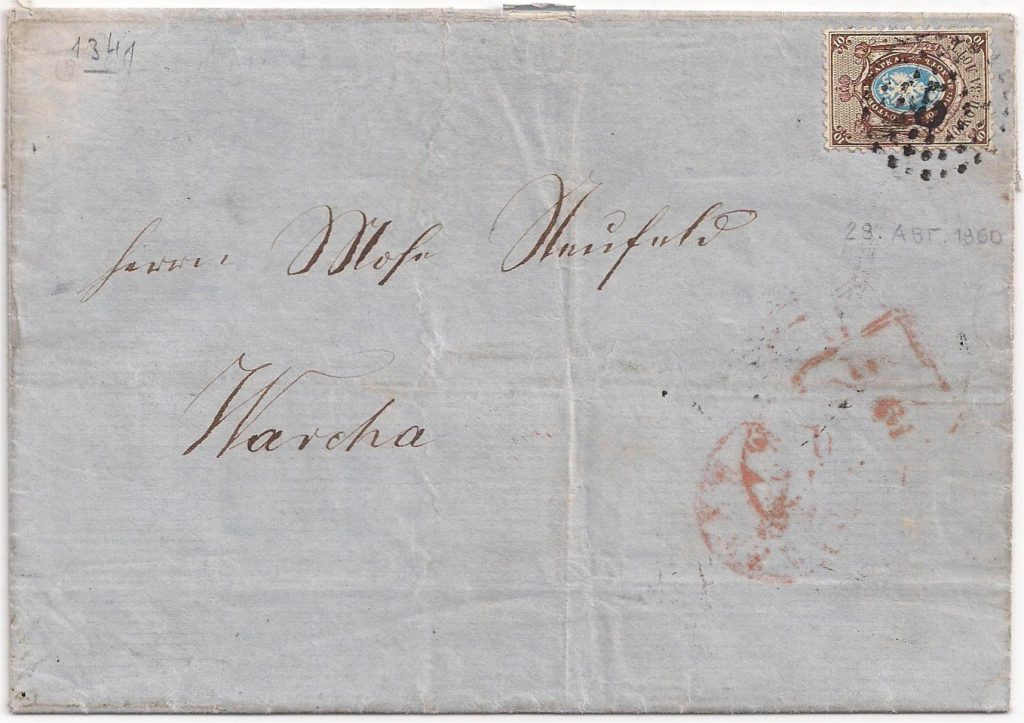In the history of the town of Vilnius is reflected the eventful history of Lithuania. The town was founded in 1323 by archduke Gediminas and becames the capital of the strongly expanding Lithuania. The personal union with Poland (1386) formed the great Polish-Lithuanian empire. As Lithuania in the east more and more crumbled off, Poland became more and more dominant in this whole. In 1569 the Union between Poland and Lithuania was formed, by which Lithuania became more a part of Poland.
In 1773 the eastern part of Lithuania, which formed part of the Polish-Lithuanian empire, became part of Russia. In 1795 the rest of Poland was divided -Third Partition of Poland- and the rest of Lithuania also became a part of the Russian empire. Lithuania was divided in three government areas : Kowno (Kaunas), Wilna (Vilnius) en Grodno (Gardinas). After 1815 the district Suwalki (Suvalkai) also came to Russia.
For a long time there no postmarks were used in the Russian Empire: letters were registered instead. Sometimes the weight and the received amount had been written on the backside of the letter.
However used already in some places, there came official postmarks in 1782, which were introduced as proof that the correct tariff was received.
In the postal regulations of 22 October 1830 it was decreed that all letters, both when sent and on arrival, must get a postmark with place and date.
Introduction of postage stamps and the number -cancellations: 1857
With this also the necessity of cancellation comes into existence. In the beginning postmarks of the former period were still used for the date on the backside of the cover in combination with ‘cancelling’ by a writtencross in black ink. Of course this was not efficient and the cancellation could be removes for re-using the postage stamp until the introduction of number-cancellations.
The numbers “1” and “2” in circles of dots were introduced as number-cancellations for St. Petersburg and Moscow in circular no. 138 of 26 february 1858. The other towns had to use the old postmarks until the coming of new cancels.Circular no. 1847 of 31May 1858 introduced these kind of cancellations for whole Russia. The circular no. 157 of 17 august 1858 gives more details.
A number (3 to 60) surrounded by points in the form of three concentric circles belongs to capitals of “guberniya”, centers of districts, centers of militar districts, S.Petersburg and Moscow. #5 belongs to Wilno as capital of Wilno gub. and #19 to Kovno, as capital of Kovno gub.

The dotted stamp on this cover has number “5”, the number indicating Vilnius.
The number-cancellations were used a short period, 1857-1860, so we find them only on the first stamps of Russia (Mi. 1-7). For the backside also the old postmarks were still used. Postage stamps were used for mail to foreign countries not until 1864.

With circular 123 of 11 February 1863 came the end for the numeral cancellations in most postoffices. Only railway and post stations and ROPIT offices used the triangular numeral cancellations until 2 June 1877.